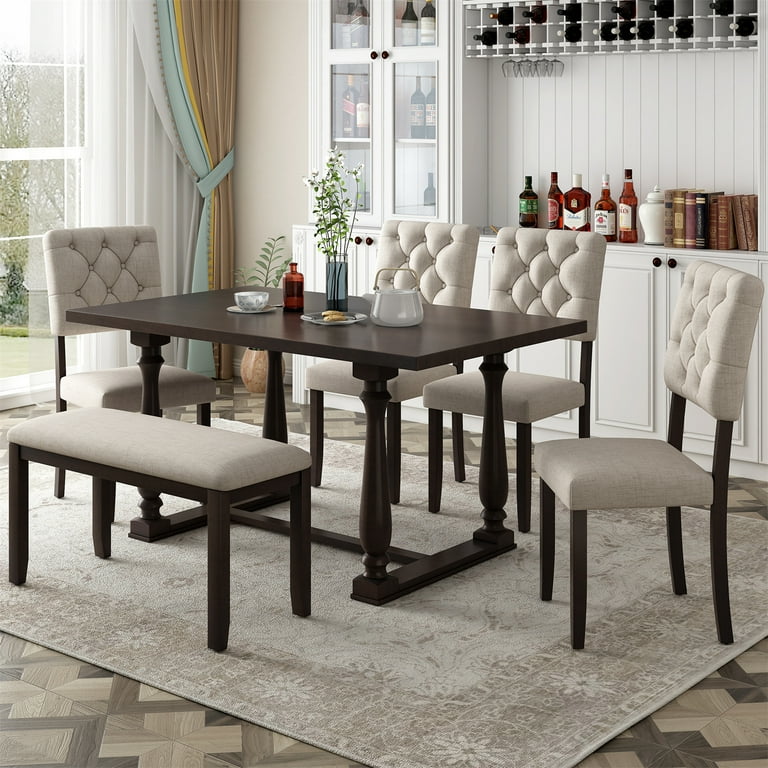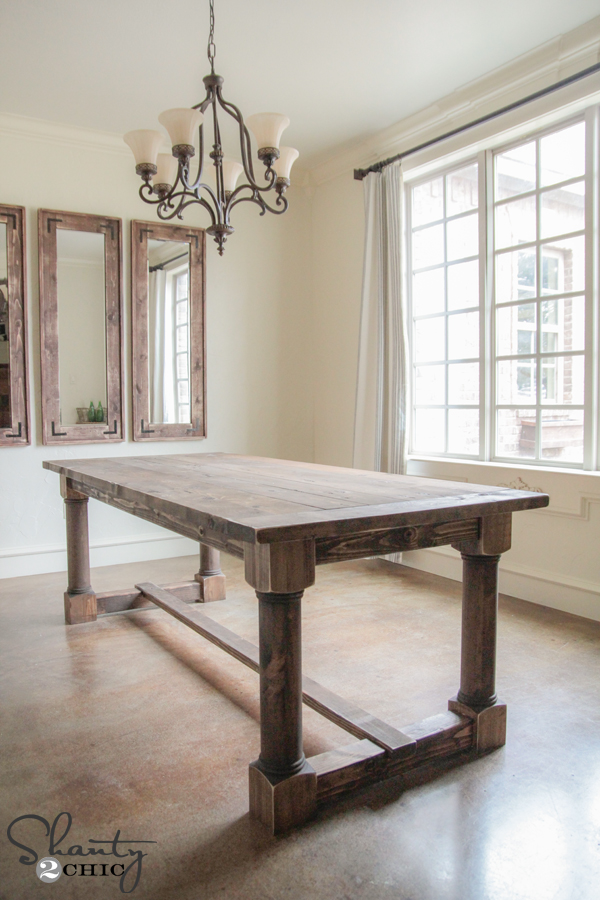Why Custom Dining Room Table Legs Are Worth the Investment
Why Custom Dining Room Table Legs Are Worth the Investment
Blog Article
From Standard to Modern: Find the Perfect Dining Area Table Legs for Your Design
The selection of dining space table legs plays a crucial duty in specifying the total personality of your area, linking the space between conventional workmanship and modern-day visual appeals. While timeless designs such as cabriole and turned legs stimulate a sense of classic sophistication, contemporary designs like barrette and geometric choices present a chance for striking visual rate of interest. Examining the best equilibrium in between these designs calls for a nuanced understanding of your existing decoration and personal preference. As you consider these components, the question continues to be: exactly how can you perfectly incorporate these diverse leg styles to create a harmonious dining experience?
Recognizing Table Leg Styles
The range of dining room table leg styles can significantly affect both the appearances and capability of the area. Each leg style adds special visual elements and sensible attributes, catering to varied design choices and usage needs. Comprehending these styles is vital for choosing the right table that lines up with your general interior decoration vision.
For example, conical legs use a clean, timeless look that can boost an area's sophistication, while pedestal bases provide stability and make the most of legroom, making them optimal for smaller rooms. Barrette legs, a trademark of mid-century modern layout, present an industrial flair, enabling for an airy, open feeling. In a similar way, trestle legs stimulate rustic charm, offering durable assistance and a feeling of timelessness.
Wooden legs can bring heat and texture, whereas steel choices often communicate a streamlined, modern ambiance. Eventually, recognizing table leg styles is essential for creating a natural dining location that mirrors individual style while guaranteeing functionality and convenience.
Traditional Table Leg Options
When selecting dining-room table legs, traditional options usually embody timeless beauty and craftsmanship. These styles mirror an abundant heritage and a commitment to quality, making them optimal for those who appreciate classic aesthetics.
One of the most iconic traditional leg designs is the cabriole leg, characterized by its graceful curved form. This layout usually includes decorative carvings and is most frequently discovered in Queen Anne and Chippendale furnishings. One more popular choice is the turned leg, which flaunts a series of smooth, rounded forms that offer a classic appearance while keeping security.
In addition, the straight leg, while basic, uses a sturdy and basic structure that can mix seamlessly with a range of tabletop designs. For those drawn to ornate detailing, claw-and-ball feet legs stimulate a feeling of magnificence and can serve as a spectacular prime focus in any kind of dining space.
Finally, pedestal bases, although not strictly legs, supply an alternate conventional option that permits for adequate legroom and can be perfectly sculpted. Each of these traditional leg styles adds to the general ambiance of an eating space, weding function with visual charm.

Modern Table Leg Styles
Modern table leg styles provide a diverse array of designs that stress cutting-edge materials and clean lines. These layouts frequently prioritize functionality while offering as striking prime focus within a dining space. Minimal appearances are prevalent, with legs crafted from products such as steel, glass, and engineered timber, which add to a airy and contemporary feel.
One popular design is the barrette leg, identified by its slender, tapered framework that offers security without overwhelming the tabletop (dining room table legs). This design is commonly discovered in mid-century modern furniture and can effortlessly enhance various dining table shapes. An additional pattern is making use of geometric forms, where legs might handle angular or unbalanced forms, including visual interest and a touch of virtuosity

Mixing Styles for Unique Rooms
Often, house owners seek to create unique eating spaces that mirror their personal design by blending numerous style elements. This strategy enables for the incorporation of diverse aesthetics, causing a harmonious yet distinct setting. As an example, combining a rustic wooden table with sleek, modern steel legs can create an eye-catching contrast that boosts the room's total appeal.
Additionally, integrating vintage table legs with contemporary table tops can stimulate a feeling of their explanation history while maintaining a modern-day perceptiveness. Such mixes not just display specific taste however additionally urge imagination, allowing house owners to curate a space that feels both individual and welcoming.
Color plays a critical duty in this mixing process; selecting table legs that enhance or comparison with the existing color pattern can enhance aesthetic interest. Whitewashed legs can soften the boldness of a dark table surface area, developing a well balanced aesthetic.
Tips for Choosing the Right Legs
Choosing the right table legs is crucial for find here accomplishing both performance and visual charm in your dining space. Begin by taking into consideration the overall style of your space. Traditional settings take advantage of legs that feature complex makings or transformed layouts, while modern rooms might call for smooth, minimalist designs.
Following, examine the elevation and security of the legs. dining room table legs. Typical table range between 28 to 30 inches in height, so ensure the legs complement this measurement for comfort. Additionally, robust materials, such as hardwood or metal, can enhance stability and long life
Evaluate the leg shape also-- choices consist of directly, tapered, or pedestal designs. Straight legs offer a traditional look, while tapered legs can add a touch of elegance. Pedestal bases provide ample legroom and are perfect for smaller rooms.
Conclusion
In summary, choosing the suitable eating space table legs needs mindful factor to consider of both modern-day and conventional designs. By balancing leg style, height, and product with the general decor, a natural and welcoming environment can be accomplished.
The selection of dining space table leg styles can substantially influence both the visual appeals and capability of the area. Eventually, recognizing table leg styles is essential for producing a natural dining location that mirrors personal design while ensuring functionality and convenience.One of the most renowned typical you could try this out leg styles is the cabriole leg, identified by its graceful rounded form. Straight legs provide a timeless look, while conical legs can add a touch of style.In summary, choosing the excellent dining space table legs calls for cautious consideration of both modern and standard designs.
Report this page